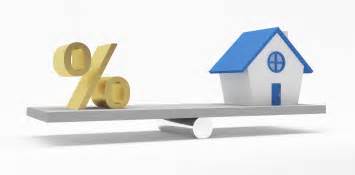TRENDING WHITEPAPERS,VIDEOS & MORE
Quicken: Half a Point Separates Owners, Appraisers on Valuations
- Tuesday, 08 January 2019
- Lending

The year ended with owner and appraiser perceptions of home values slightly moving in different directions, although the difference remains less than half a percent nationally.
Appraisal values were an average of 0.45 percent lower than homeowners expected in December, according to the National Quicken Loans Home Price Perception Index. This is compared to November, when there was just a 0.36 difference between the two data points.
Despite the dip in perception, appraisal values themselves rose in December at a faster pace than they did in November. The National Quicken Loans Home Value Index reported a 0.79 percent monthly increase in the average appraisal value. The national index also showed the average appraisal jumped 5.15 percent year-over-year.
Home Price Perception Index is a measure of homeowners' opinion of home values, continued to show a small difference between owners' and appraisers' opinions on a national level, but the appraisals in the vast majority of metro areas were higher than the owner expected in December. The index compares the estimate that the homeowner supplies on a refinance mortgage application to the appraisal that is performed later in the mortgage process.
Homeowners in Boston, for example, saw appraisals coming back an average of 2.98 percent higher than what the homeowners expected. Based on the area's median home value, that is an average of about $15,000 in extra equity the owners don't realize they had.
"Many consumers might not be watching their local housing market as closely as appraisers who are reviewing home sales every day, leading owners to incorrectly estimate their home's value," said Bill Banfield, executive vice president of capital markets for Quicken Loans. "There are many ways a homeowner can make their equity work for them if they have a realistic estimate of their home's value. Tapping into home equity to consolidate high-interest debt or make home improvements are very popular options right now."
Home Value Index, a measure of changes in the value of home purchases and mortgage refinances and is based exclusively on appraisal data, reported increased appraisal values across the U.S. The National HVI showed that home values rose in December 0.79 percent compared with November. The annual growth is even stronger, with the average appraisal rising 5.15 percent over last year's level.
Another sign of the housing market's health is that all four regions measured by the study reported modest growth on the monthly and annual measures. The appraisal values ranged from 4.41 percent annual growth in the Northeast to a 5.98 percent year-over-year increase in the West.
"Any consumer who has read recent news about the housing market and has the impression that it is slowing to a halt should see that the HVI proves that this could not be farther from the truth," said Banfield. "Home value growth is now at a more normal, sustainable clip--keeping pace with inflation and wage growth more than we have seen in the past few years."
Read more...
Unemployment Increases, Non-Bank Mortgage Employment Slips
- Friday, 04 January 2019
- Lending

The unemployment rate increased to 3.9 percent in December, from 3.7 percent in the previous month. The number of unemployed persons increased by 276,000 compared with the previous month to 6.3 million. A year earlier, the jobless rate was 4.1 percent, and the number of unemployed persons was 6.6 million, according to the Bureau of Labor Statistics. Nonbank mortgage companies employed 337,000 workers in November, a decrease of 5,000 jobs compared with October and 338,800 a year earlier.
December's numbers aside, 2018 was an outstanding year for employment, especially considering the length of the economic recovery the U.S. has experienced.
“The labor market ended the year on a stellar note, which should help soothe fears of a marked slowdown in the economy, said Doug Duncan, chief economist at Fannie Mae. “Robust December hiring plus upward revisions in the prior two months pushed the three-month average job gain to the strongest pace since September 2016, not too shabby for an expansion that is long in the tooth. While the focus may be on the impressive strength of job gains and the tick-up in annual wage growth to tie an expansion high, we believe the best news in today’s report is the rise in the labor force participation rate to the highest level in more than a year, which should please the [Federal Reserve].”
Given recent tightening of financial market conditions, including stock market volatility and widening credit spreads, amid well-anchored inflation around the Fed’s target, the positive jobs report gives the Fed more room to stick with the two rate hikes projected for this year in the, which remains Fannie’s expectation.
For housing, the jobs report signaled continued divergence of key demand and supply fundamentals. Whereas overall hiring and wage growth remain solid, the number of jobs in residential construction barely budged over the month, suggesting that the prolonged housing supply crunch will continue into the new year.
Read more...
Trade Groups Seek Public Hearing on Increased Appraisal Threshold
- Thursday, 03 January 2019
- Lending

Sixteen organizations that represent the interests of the appraisal industry have sent a letter to the Federal Reserve, Federal Deposit Insurance Corp., and the Office of the Comptroller of the Currency requesting that the agencies hold a public meeting as part of the process to determine whether to increase the residential appraisal threshold from $250,000 to $400,000.
In the letter, the organizations point to the recently concluded Economic Growth and Regulatory Paperwork Reduction Act process's findings that no increase in the threshold was merited, driven in part by broad stakeholder opposition to such an increase.
Also, the organizations emphasize that rate increases and subsequent action by Congress has only reduced pressure on the demand for appraisal services, and that a public hearing would be useful for all parties to better understand the current rationale for the proposed increase.
"The impact of this proposal on homebuyers and the housing market is too great not to hear from a broad range of stakeholders across multiple forums,” said Robert Morrison, international president for the American Society of Appraisers, one of the trade groups that signed the letter. “We feel strongly that a hearing is not only appropriate but necessary for the agencies to have as complete a record as possible upon which to base their decision on regarding this proposal."
The following organizations were signatories to the letter:
American Society of Appraisers
American Society of Farm Managers and Rural Appraisers
MBREA |The Association for Valuation Professionals
American Guild of Appraisers, OPEIU, AFL-CIO
Appraisers' Coalition of Washington
California Coalition of Appraisal Professionals
Illinois Coalition of Appraisal Professionals
Louisiana Real Estate Appraiser Coalition
North Carolina Real Estate Appraiser Association
Northern Colorado Association of Real Estate Appraisers
North Dakota Appraiser Association
Ohio Coalition of Appraisal Professionals
RICS
Appraisal Institute
South Carolina Professional Appraisers Coalition
Tennessee Appraiser Coalition
Utah Coalition of Appraisal Professionals
Read more...
Pending Home Sales Drop 0.7 Percent in November
- Friday, 28 December 2018
- Lending

Pending home sales overall slipped in November but experienced small increases in the Northeast and the West, according to the National Association of Realtors.
The Pending Home Sales Index, a forward-looking indicator based on contract signings, decreased 0.7 percent to 101.4 in November, down from 102.1 in October. However, year-over-year contract signings dropped 7.7 percent, making this the eleventh straight month of annual decreases.
"The latest decline in contract signings implies more short-term pullback in the housing sector and does not yet capture the impact of recent favorable conditions of mortgage rates," said Lawrence Yun, NAR’s chief economist. "The West crawled back lightly but is still experiencing the biggest annual decline among the regions because of unaffordable conditions," Yun said.
Pending contracts have reached their lowest mark since 2014, there is no reason to be overly concerned, and he predicts solid growth potential for the long-term. All four major regions sustained a drop when compared to one year ago, with the West taking the brunt of the decrease.
"Land cost is expensive, and zoning regulations are too stringent,” said Yun. “Therefore, local officials should consider ways to boost local supply; if not, they risk seeing population migrating to neighboring states and away from the West Coast."
And the government shutdown won’t be good for the housing market.
"Unlike past government shutdowns, with this present closure, flood insurance is not available. That means that roughly 40,000 homes per month may go unsold because purchasing a home requires flood insurance in those affected areas," Yun said. "The longer the shutdown means fewer homes sold and slower economic growth."
Among the cities with the greatest year over year increase in active listings are Denver-Aurora-Lakewood, Colo., Seattle-Tacoma-Bellevue, Wash., San Francisco-Oakland-Hayward, Calif., San Diego-Carlsbad, Calif., and Providence-Warwick, RI., according to realtor.com.
"Home sales in 2018 look to close out the year with 5.3 million home sales, which would be similar to that experienced in the year 2000,” said Yun. “But given the 17 million more jobs now compared to the turn of the century, the home sales are clearly underperforming today. That also means there is steady longer-term growth potential."
A Regional Look at The Index
The Pending Home Sales Index in the Northeast rose 2.7 percent to 95.1 in November and is now 3.5 percent below a year ago. In the Midwest, the index fell 2.3 percent to 98.1 in November and is 7.0 percent lower than November 2017.
Pending home sales in the South fell 2.7 percent to an index of 115.7 in November, which is 7.4 percent lower than a year ago. The index in the West increased 2.8 percent in November to 87.2 and fell 12.2 percent below a year ago.
Read more...


